The universal appeal (and infinite possibilities) of the cookie cap
Taking texture to the top.
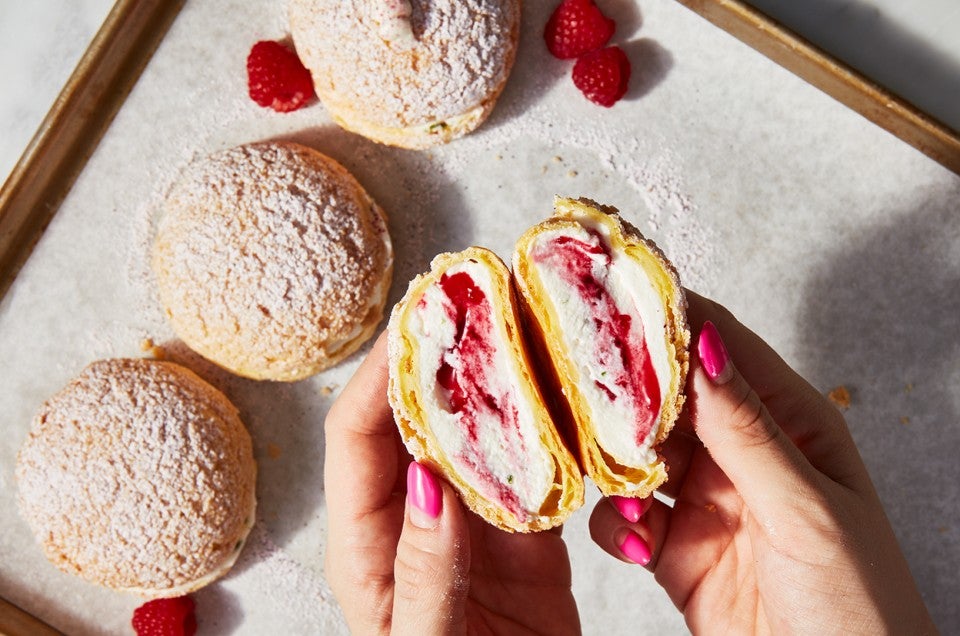

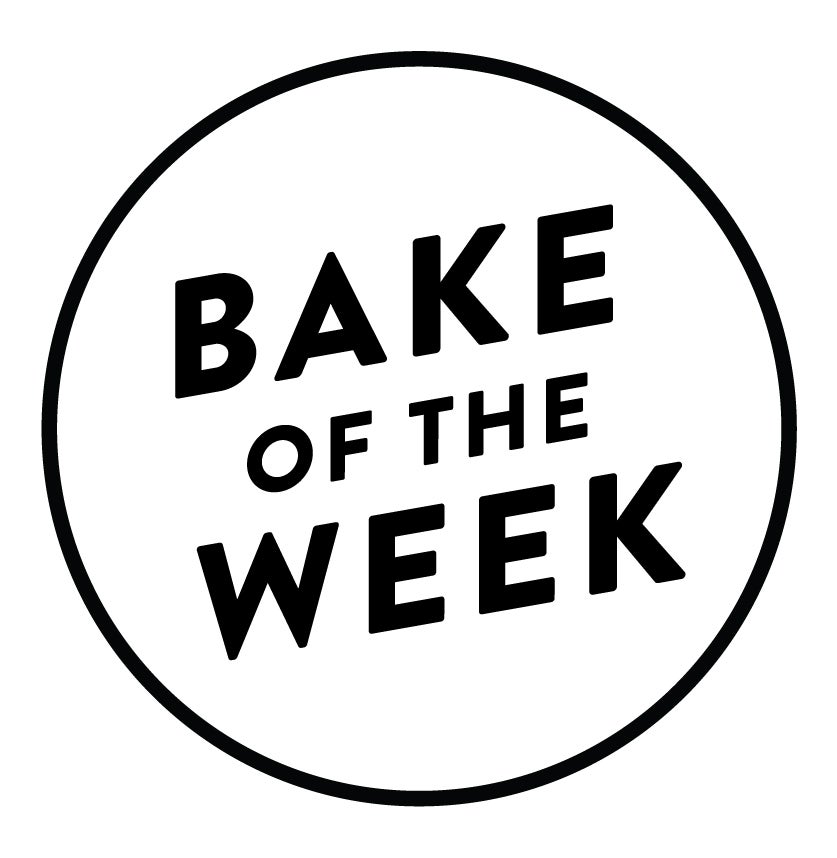 Each December, I spend my birthday at the oven baking for my loved ones, rather than letting them bake for me. In 2021, with kids doing their full share to help, we whipped, simmered, stirred, piped, baked, packaged, and eventually sped into a snowy night to deliver our treats to friends.
Each December, I spend my birthday at the oven baking for my loved ones, rather than letting them bake for me. In 2021, with kids doing their full share to help, we whipped, simmered, stirred, piped, baked, packaged, and eventually sped into a snowy night to deliver our treats to friends.
The texts started almost immediately.
“THESE ARE UNREAL!”
“Ridiculous. Oh my gosh. Thank you!”
“WHAT ARE THEY??!” What were they? They were Craquelin Cream Puffs (or “pâte à choux aux craquelin”), a standard cream puff made "UNREAL” with a simple topping we informally call a “cookie cap.” It adds a crunchy shell of texture that bursts when you bite, causing the tongue to holler superlatives about the contrast between creamy fillings and their crispy container.
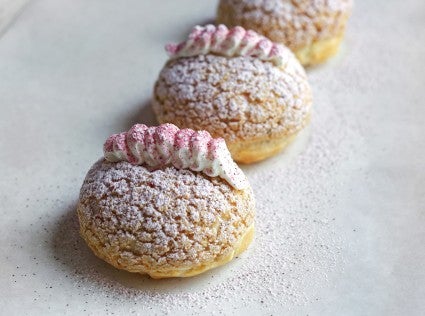
The cookie cap isn’t unique to cream puffs. From conchas to Dutch crunch, tiger bread, pineapple buns, and coffee buns (papparoti), rolls with caps or brushed-on slurries can be seen across many baking styles and cultures. You can use the cookie cap to literally top what you’ve done before, adding flavor, texture, and beauty to bread and pastries through these simple finishing techniques.
Toppings for everything from rolls to cream puffs can be divided into two basic categories based on their consistency. In the firmer category are dough-based toppings (like the cookie cap); and, looser in texture, the slurry-based option.
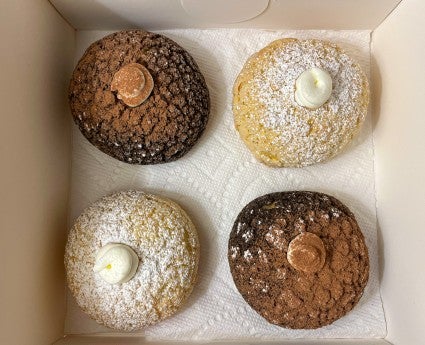
Used for Conchas, Lemon Sugar Crunch Buns, Craquelin Cream Puffs, or even Brioche Buns and other enriched breads, the cookie cap is an instant friend to any risen roll or choux.
The cap is made from a firm dough roughly equal parts (by weight) butter, sugar, and flour. Similar in consistency to sugar cookie dough, it’s rolled thinly and cut, then added as a topping near the end of proofing or, as with the craquelin, right after piping the pâte à choux. During baking, the cookie melts and crisps, melding itself to the dough below.
Options for flavoring the cookie cap are endless. From cocoa to colorings, fruit powders, oils, and extracts, flavor and color can be made to match fillings, amplify existing ingredients, or provide contrast. For an example of a flavorful cap in action, see our Lemon Sugar Crunch Buns with their zippy lemon powder-infused cap. And, for additional inspiration, Mariela Camacho’s deep history with conchas cannot be beaten for fresh takes on the classic Mexican pan dulce.
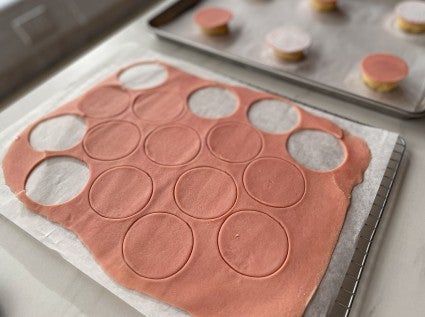
But you can keep it simple, too. For my craquelin recipe, I make a brown sugar cap that offers just enough caramel flavor and depth to balance the lime-infused whipped cream and hibiscus syrup filling.
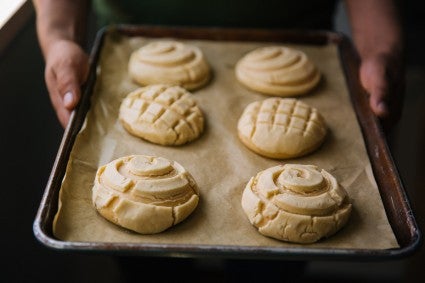
A second category of topping options is the slurry. Similar to the cap but piped or applied with a brush due to a looser consistency, it bakes up thinner and less cookie-like, with a more textured, cracker-y crust.
Famously known as Dutch crunch in San Francisco, or tiger bread in the Netherlands, the slurry can be found from Europe to Asia topping rolls and breads with names like "giraffe bread" and "Marco Polo bread." While most commonly seen in savory applications, the slurry can also go sweet, like in the coffee buns known as papparoti: a brioche-style butter-filled roll topped with a piped, coffee-infused sweet slurry.
To add a slurry to rolls, a variable combination of rice flour, water, oil, sugar, yeast, and various flavorings are made into a thick paste and painted or piped onto the roll’s surface just before baking. The slurry cracks and crisps in the oven, forming the signature mottled visual and textured surface. It literally crunches when you eat it.
Leaning into savory notes, I’ve used everything from miso paste to beer for flavoring slurries, but simpler options are a great place to start. Our friend Sarah Jampel wrote a piece for Food52 chronicling her experience off-roading with slurries. If you’re looking for a recipe to start with, I’d recommend her method as an option.
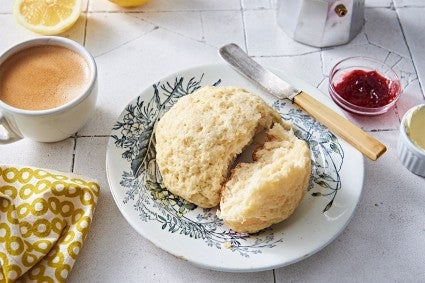
Start with these Craquelin Cream Puffs to get a sense of working with the cap. From there, you can read Mariela’s blog and try her twists on our Cinnamon Conchas, or maybe you just jump in with both feet and add a chocolate sablé or shortbread to rolls made with Japanese Chocolate Milk Bread. Yes, that’s right, many shortbread-style cookie doughs can be rolled to about 1/8” thick, cut to size, and used as cookie caps on rolls and choux pastry.
With a little effort and few ingredients, the universally beloved cookie cap and slurry offer endless options to take your baking above and beyond.
Cover photo (Craquelin Cream Puffs) by Rick Holbrook.

